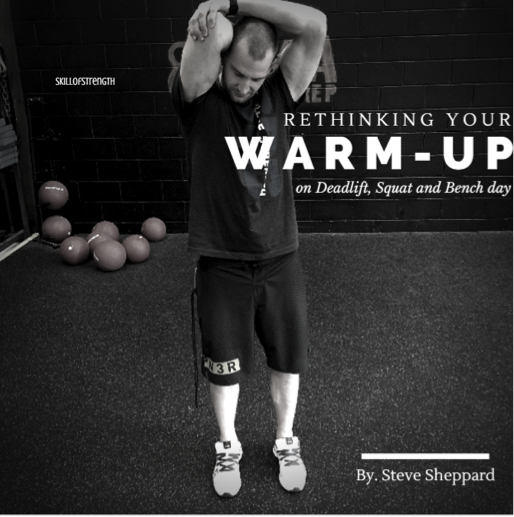
You likely have a standard warm-up that you do before each workout. (You do warm-up, right?)
After you leave the locker room your pre-workout routine probably looks something like this:
- You do some sort of bouncy tip-toe walk on your way to the foam roller (because that seems like the more athletic and loose thing to do).
- Next, you roll around on 5 different foamy or round objects.
- Finally, you yawn, take a sip of your pre-workout drink and move your arms around in different directions.
- Heck, you might even throw in a few toe reaches if you have time!
Maybe you fall into the opposite camp. You’ve got a 45 minute warm-up that you follow religiously.
Either way, here is some food for thought.
Do you ever change your warm-up to reflect the movements you’ll be doing in your workout?
Today we’ll go through some barbell training mobility drills that will help you prepare for deadlift, squat and bench press day!
General mobility work and increasing your core temperature to prepare your body for exercises is certainly a positive thing. I think having a core or general mobility plan that you do daily is a great idea and certainly way better than not warming up at all.
However, it would also be a good idea to spend a few minutes preparing your body for the specific movements your main exercise(s) require. This will not only help to limit any silly muscle pulls from a poorly prepared muscle, but it can also do wonders for your technique!
Lets take a look at 3 main exercises in many strength and conditioning programs and go over how you should warm up for each exercise.
Barbell Training Mobility Drills
Deadlift
Warm-up Requirements
To properly access the bottom position of a deadlift, you’re going to need a certain amount of mobility in your posterior chain. The posterior chain for this purpose is the group of muscles running down the back of your legs. Different deadlifting styles require different amounts of mobility.
Having a restricted posterior chain (whether it’s from sitting at work all day, or because you have an injury, such as a chronic hip problem) will make it difficult to sit into your hips at the bottom of the deadlift. Many times this restricted mobility in your posterior chain causes things like lumbar flexion, a forward weight shift or other compensations.
Example of Specific Prep Drills for Deadlifts
There are tons of drills that are effective at targeting the posterior chain, but here are some things to include in your prep for deadlift day.
1. Foam roll, calves, hamstrings, glutes and t-spine
2. Toe elevated toe reach with posterior weight shift


3. Core active leg raise
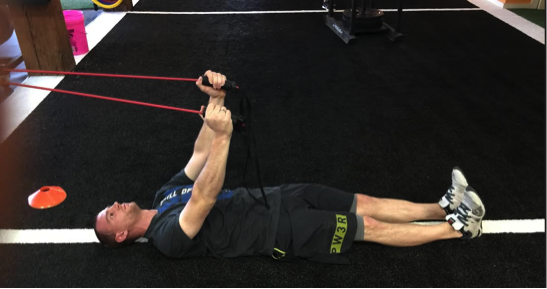
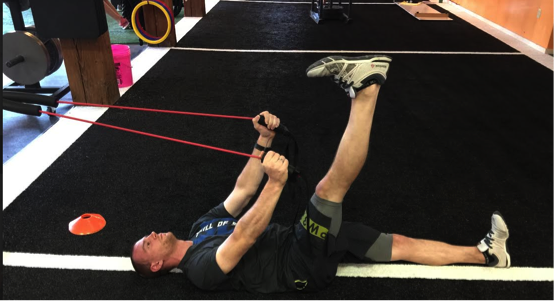
Squat
Warm-up Requirements
Just like with the deadlift, mobility restrictions are most problematic at the bottom of the squat, or what is referred to as the “hole.” When you’re in the bottom of the squat your ankles and hips need to be able to move freely to allow for an optimal tibial/torso relationship as well as proper hip depth.
Different squat styles require different amounts of mobility in specific joints.
A few examples:
- Restricted ankle dorsiflexion can cause your heels to come off the ground and additional stress will be placed on your knee (or elsewhere). View ankle mobility drills.
- Tight Adductors make it difficult for your knees to properly track your ankles during hip and knee flexion and can force you to pull your knees towards each other (valgus) even leading to a pronated foot position.
- Poor hip mobility can recruit your otherwise stable lumbar spine to make up for the lacking movement. View hip mobility drills.
All of the above keep you from squatting safely!
Examples of Specific Prep Drills for Squats
You probably know some stretches to open up your groin and adductors. There are a lot to choose from, and many will work, but here are a couple of prep exercises that we add in specifically on squat days!
1. Foam roll hamstrings, glutes, adductors, hip flexors and TFL
2. Ankle glides/Toe elevated ankle glides (View ankle
3. Hip Prying
4. Band Squats (seen below)
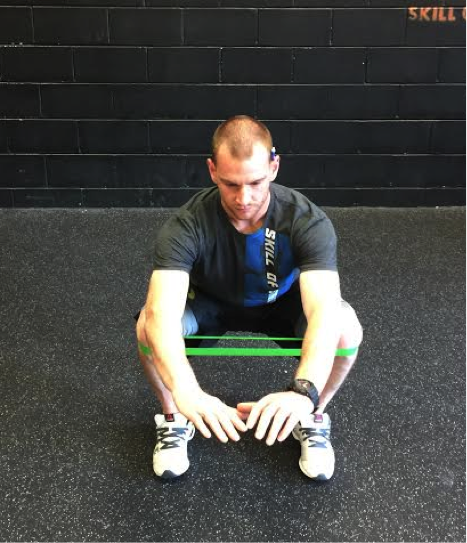
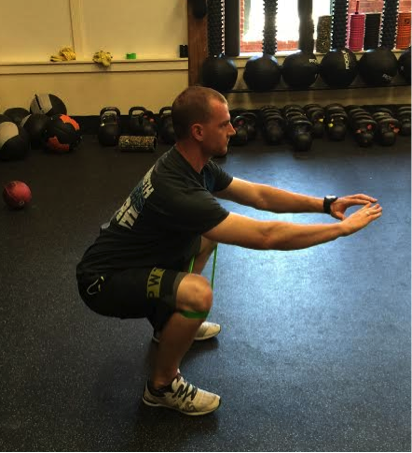
Bench Press
Warm-up Requirements
The set-up for the bench press includes a certain amount of mobility in the hips, and thoracic spine, while the movement pattern of the bench press requires more stability in the glenohumeral joint.
In order to get into an optimal pressing position you need mobility and in order to do the press safely you need stability. An optimal pressing position for the bench press is described as “a full body arch, from the toes/heels up and through the shoulders.” In order to achieve that full body arch, you need some flexibility in your hip flexors and quads, and mobility in your thoracic spine.
Having tight hip flexors might not make it possible for you to place your heels back under your hips. In order to apply force into the bar you need a stable shoulder joint for that force to travel through. An unstable shoulder joint during the press is not only an injury risk, but also inefficient. Getting your lats active prior and during the press can have a really positive effect on the bench press.
Examples of Specific Prep Drills and Activation for Bench Press
1. Foam roll pecs, t-spine, hip flexors and quads
2. MASS Stretch
3. Hand Stacks
Your Takeaways
The purpose of your prep should be to prepare your body for the work you’re planning to get done. If the exercises you are doing that day have specific mobility requirements it’s a good idea to make sure you spend a little extra time accessing that mobility.
Instead of relying on a light first set to fix all of your mobility issues, try a couple of the examples above and let us know how they work out!

Great job! I like adding mobility drill like these to my warm-up routine.
It’s very funy other people in the gym think you’re wasting your time with warm-up but then, they aren’t able to do anything exercise in a correct form.
Keep it up!